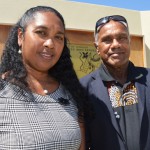
Did you know that your house – and, in fact, everyone else’s house in the South Burnett – moved about seven centimetres this year?
The Australian continental plate is slowly moving north-east every year as a result of plate tectonics and continental drift.
Seven centimetres doesn’t sound much but it adds up over time.
It means that map co-ordinates have to be readjusted, and precise operations such as mobile location-based services and automated mining operations are affected.
Farmers using precision agriculture techniques may also notice changes.
Resources Minister Matt Canavan announced this week that the nation’s mapping co-ordinates were being realigned approximately 1.8 metres north-east.
This is the first update to Australia’s co-ordinate reference frame in more than 20 years.
“This movement is significant when it comes to applications that rely on highly accurate positioning, such as precision agriculture, the emerging intelligent transport sector, mobile location-based services and automated mining operations,” Mr Canavan said.
“Updating this reference frame is a demanding technical task and the previous co-ordinates were set in 1994.
“Scientists have chosen to base the new co-ordinates – referred to as GDA2020 – on the projected position of the Australian continent on January 1, 2020, adding an extra three years of working life to the new data.”
Member for Capricornia Michelle Landry said she was surprised to learn that Australia sat on the fastest-moving continental plate on the planet.
“So, to put that in a Central Queensland context, we have moved more than 11 metres north-east since Rockhampton was established in the late 1850s, over half the length of a cricket pitch.
“Since Aborigines first arrived in this region some 50,000 years ago, Australia has moved about three-and-a-half kilometres.”























